The double feature does not represent a long night at the home video screen but rather last week’s and this week’s Sunday Night Movie feature combined into a single essay.
After watching 1968’s Planet of The Apes the idea struck me that I should watch all five of the original Ape movies in order. A coupe of years ago I scored a blu-ray box set that had all the films and tons of bonus feature, so logistically I saw no issues. That said I knew that meant I would be watching the crap with the imaginative. Oh well, I decided to do it.
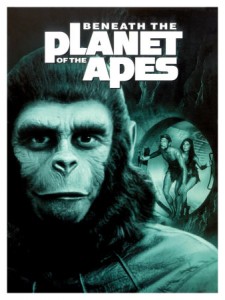 Beneath the Planet of the Apes is the hastily consider sequel to 1968’s smash box-office success Planet of the Apes. However due to financial troubles at 20th Century Fox and boardroom infighting the film suffered from a trouble production from the get-go. Heston, the star of the first film hated the very idea of any sequel and only reluctantly agreed to participate as a favor to Daryl Zanuck, but even this came at the price with Heston insisting that his character of Taylor — spoiler alert stop reading if you care, serious stop reading — be killed off in the story.
Beneath the Planet of the Apes is the hastily consider sequel to 1968’s smash box-office success Planet of the Apes. However due to financial troubles at 20th Century Fox and boardroom infighting the film suffered from a trouble production from the get-go. Heston, the star of the first film hated the very idea of any sequel and only reluctantly agreed to participate as a favor to Daryl Zanuck, but even this came at the price with Heston insisting that his character of Taylor — spoiler alert stop reading if you care, serious stop reading — be killed off in the story.
The plot of Beneath is one that makes little to no sense. Another crew has been dispatched following Taylor’s into space. Now Taylor’s team knew that they were on a one-way trip into the future, proving Dr. Hasslien’s theories. In this film Brent (James Franciscus) and his crew have been dispatched to find Taylor. (Apparently Landon, Dodge, and Stewart were utter berks and no one wants them back,) Brent crashes, and has a much abbreviated repeat adventure of Taylor’s first encounter with ape society. Escaping the apes, he and the mute animal/human Nova go into the forbidden zone searching for Taylor. They find mutant humans with psychic powers who are at war with the Apes. (First appearance of the Producer’s wife as the mutant Albina.) Taylor and Brent find each other, have a manly fight (thanks, mutants!) and then are caught there when the Ape army arrives. Everyone panics, there’s lot of gunfire, and a nuclear device that is over 2000 years proves that there is no beating American manufacturing when it goes off and destroys the world.
This film was a hit. It practically relaunched the idea of major studio, major money sequel. Except for the Universal horror franchises, series films before Beneath were usually constructed like episodes, each film could be watched on its own and did not effect the continuity of other films. After the major success of Beneath, film sequels were seen not as episodes but a continuation of the same story. Quite a change.
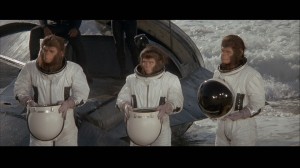 I can clearly remember seeing Escape from the Planet of the Apes at the Sunrise Theater in Fort Pierce Florida. That was 1971 so I would have been 10 years old, and I remember laughing a full belly laugh as the ‘unmasking’ scene at the film’s open. Escape faced the challenge of crafting a continuation of the story when in the pervious film not only did your principle characters get killed, but the entire freakin’ world was turned to ash as a gravely toned narrator informed the audience that the world was now dead.
I can clearly remember seeing Escape from the Planet of the Apes at the Sunrise Theater in Fort Pierce Florida. That was 1971 so I would have been 10 years old, and I remember laughing a full belly laugh as the ‘unmasking’ scene at the film’s open. Escape faced the challenge of crafting a continuation of the story when in the pervious film not only did your principle characters get killed, but the entire freakin’ world was turned to ash as a gravely toned narrator informed the audience that the world was now dead.
Hollywood turned to the now familiar trope, time travel. Thee apes, apes that in the first film believed flight to be a physical impossibility, have figured out the operation of an advanced spacecraft repaired it, launched it, and through a freak incident are thrown back in time to 1973. So instead of a story about men on a planet of apes, it is a story of apes stranded on a world of fearful humans. While there are a number of comical bits, this film does plumb interesting depths. What actions are morally justified to prevent a terrible future from coming into reality? What is the place of the outsider?
Something I only noticed on this viewing is the continuity of a secondary character. In Planet of the Apes the flight is done in part to prove Dr Hasslein’s theories, but not much more than that is mentioned of the good doctor. (Clearly a script stand-in for relativity and Einstein.) Beneath mentioned the good doctor not at all, but in Escape he is a principle character. (Played wonderfully by Eric Braeden, who also star in another 70’s SF film in my library, Colossus: The Forbin Project.)
The ape time-travelers quickly transit from curiosities, to celebrities, and into hunted fugitives. Though they find allies, second appearance of the producer’s while as a kind and sympathetic vet, in the end there are more enemies than friends. Like so often in film of the 1970’s it ends darkly, but the producers this time left themselves a thread for another film and this upcoming Sunday I’ll watch Conquest of the Planet of the Apes.
 Aliens as my Sunday Night Movie. At the start the disc presented me with a choice; 1986 theatrical release or the 1992 Special Edition? I selected the Special Editions and settled in with my bowl of popcorn.
Aliens as my Sunday Night Movie. At the start the disc presented me with a choice; 1986 theatrical release or the 1992 Special Edition? I selected the Special Editions and settled in with my bowl of popcorn.
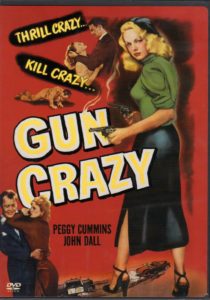
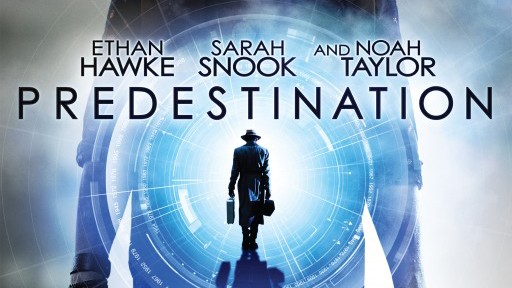
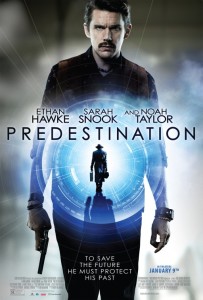
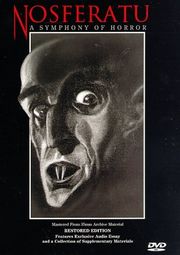
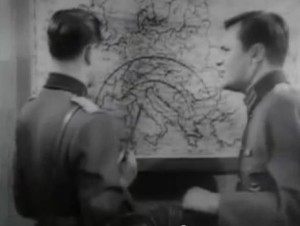
 seen far too many properties from the baby-boom picked up and turned into utter dreck by producers, writers, and directors who had absolutely no respect for the original source material. So Speed Racer waited until I got around to it on Netflix, because that is one thing the service is great for, taking risky experimental leaps in your cinema viewing.
seen far too many properties from the baby-boom picked up and turned into utter dreck by producers, writers, and directors who had absolutely no respect for the original source material. So Speed Racer waited until I got around to it on Netflix, because that is one thing the service is great for, taking risky experimental leaps in your cinema viewing.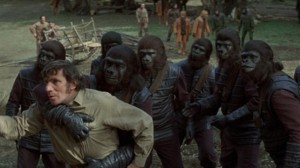 So after the racie war implications driving the plot of Conquest of the Planet of the Apes, 20th Century Fox, fearful that they had driven the kiddie away, took the next, and final, installment of franchise in a lighter and more optimistic direction. The screenwriter for the previous two sequel relinquished his duties, in part due to the dark nature of his proposed script and in part to ill health, while the husband wife team that penned the screenplay for The Omega Man came onto the scene.
So after the racie war implications driving the plot of Conquest of the Planet of the Apes, 20th Century Fox, fearful that they had driven the kiddie away, took the next, and final, installment of franchise in a lighter and more optimistic direction. The screenwriter for the previous two sequel relinquished his duties, in part due to the dark nature of his proposed script and in part to ill health, while the husband wife team that penned the screenplay for The Omega Man came onto the scene.
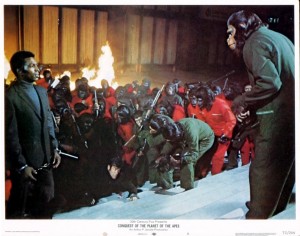 favorite film of the series, Conquest of the Planet of the Apes. While I love me Planet of the Apes and it is wonderful film, more often than any other in the franchise I will pull out the blu-ray of Conquest and sit back to watch it over and over. Once I did get it on Blu-ray I also stopped watching the theatrical cut and exclusively watch the unrated directors edition. When the film was released in 1972 they had hopes of getting a ‘G’ rating, but thee scene of revolution were so intense the studio feared they might get an ‘R’ and ordered the ending re-written and the footage edited to be considerably less graphic.
favorite film of the series, Conquest of the Planet of the Apes. While I love me Planet of the Apes and it is wonderful film, more often than any other in the franchise I will pull out the blu-ray of Conquest and sit back to watch it over and over. Once I did get it on Blu-ray I also stopped watching the theatrical cut and exclusively watch the unrated directors edition. When the film was released in 1972 they had hopes of getting a ‘G’ rating, but thee scene of revolution were so intense the studio feared they might get an ‘R’ and ordered the ending re-written and the footage edited to be considerably less graphic.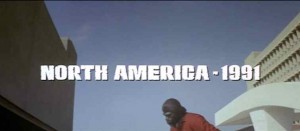 progressed from pets, replacing the cats and dogs that died in a global pandemic into a servant and slaves. Armando, the kind hearted circus owner last seen saving the time-traveling apes’ baby has returned to the city, bring the circus for a need tour, and along with it the now adult intelligent ape Caesar. (Whom was named Milo as a baby in the last film but hey retcon is nothing new.) thing go badly and before long Ceasar is a slave himself, alone and friendless, subject to the same brutal treatment as his ape brothers and sisters, including the producer’s wife in appearance number 3 in the ape movies. In the end Caesar lives up to his new name and leads a revolt overthrowing the fascist power structure in a brutal, bloody, and revenge filled night. The film ends with images of the city burning and nearly all of our principle human characters dead.
progressed from pets, replacing the cats and dogs that died in a global pandemic into a servant and slaves. Armando, the kind hearted circus owner last seen saving the time-traveling apes’ baby has returned to the city, bring the circus for a need tour, and along with it the now adult intelligent ape Caesar. (Whom was named Milo as a baby in the last film but hey retcon is nothing new.) thing go badly and before long Ceasar is a slave himself, alone and friendless, subject to the same brutal treatment as his ape brothers and sisters, including the producer’s wife in appearance number 3 in the ape movies. In the end Caesar lives up to his new name and leads a revolt overthrowing the fascist power structure in a brutal, bloody, and revenge filled night. The film ends with images of the city burning and nearly all of our principle human characters dead.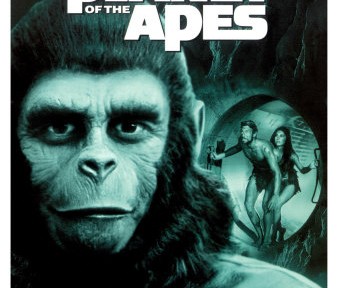
 Beneath the Planet of the Apes is the hastily consider sequel to 1968’s smash box-office success Planet of the Apes. However due to financial troubles at 20th Century Fox and boardroom infighting the film suffered from a trouble production from the get-go. Heston, the star of the first film hated the very idea of any sequel and only reluctantly agreed to participate as a favor to Daryl Zanuck, but even this came at the price with Heston insisting that his character of Taylor — spoiler alert stop reading if you care, serious stop reading — be killed off in the story.
Beneath the Planet of the Apes is the hastily consider sequel to 1968’s smash box-office success Planet of the Apes. However due to financial troubles at 20th Century Fox and boardroom infighting the film suffered from a trouble production from the get-go. Heston, the star of the first film hated the very idea of any sequel and only reluctantly agreed to participate as a favor to Daryl Zanuck, but even this came at the price with Heston insisting that his character of Taylor — spoiler alert stop reading if you care, serious stop reading — be killed off in the story. I can clearly remember seeing Escape from the Planet of the Apes at the Sunrise Theater in Fort Pierce Florida. That was 1971 so I would have been 10 years old, and I remember laughing a full belly laugh as the ‘unmasking’ scene at the film’s open. Escape faced the challenge of crafting a continuation of the story when in the pervious film not only did your principle characters get killed, but the entire freakin’ world was turned to ash as a gravely toned narrator informed the audience that the world was now dead.
I can clearly remember seeing Escape from the Planet of the Apes at the Sunrise Theater in Fort Pierce Florida. That was 1971 so I would have been 10 years old, and I remember laughing a full belly laugh as the ‘unmasking’ scene at the film’s open. Escape faced the challenge of crafting a continuation of the story when in the pervious film not only did your principle characters get killed, but the entire freakin’ world was turned to ash as a gravely toned narrator informed the audience that the world was now dead.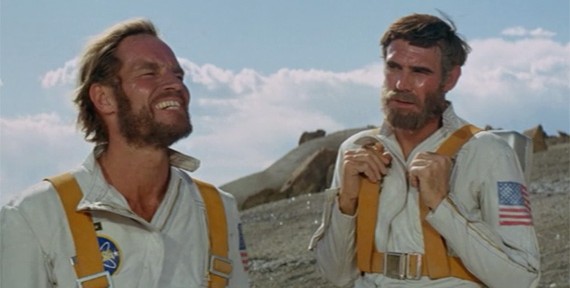
 Released in 1968 Planet of the Apes would certainly be on the short list for best SF movies of that or any decade, but I can tell you that it is not one of the two films I selected as most influential from the 1960s.
Released in 1968 Planet of the Apes would certainly be on the short list for best SF movies of that or any decade, but I can tell you that it is not one of the two films I selected as most influential from the 1960s.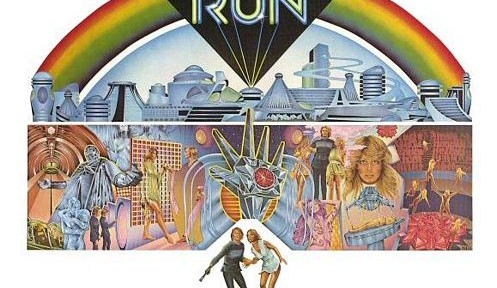
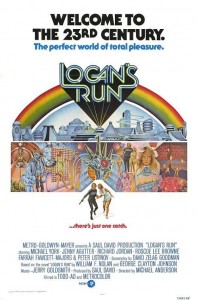 Logan’s Run is a 1976 Science-Fiction film made before that great behemoth Star Wars derailed Science-Fiction films for a generation. The film, based on a novel of the same name written by William F. Nolan and George Clayton Johnson, is set in a utopian 23rd century. Crime, disease, hunger, war, and pollution, are all problems of a literally forgotten past. The story is set in an unnamed city, protected from the war-torn hell that scars the Earth by massive domes, where the citizens lead lives dedicated to frivolity and hedonistic pleasures. Families no longer exist, and people are raised in crèches without ever knowing their parents. All their needs are met, the city is government by a benevolent computer system called the Network, and it all works seamlessly.
Logan’s Run is a 1976 Science-Fiction film made before that great behemoth Star Wars derailed Science-Fiction films for a generation. The film, based on a novel of the same name written by William F. Nolan and George Clayton Johnson, is set in a utopian 23rd century. Crime, disease, hunger, war, and pollution, are all problems of a literally forgotten past. The story is set in an unnamed city, protected from the war-torn hell that scars the Earth by massive domes, where the citizens lead lives dedicated to frivolity and hedonistic pleasures. Families no longer exist, and people are raised in crèches without ever knowing their parents. All their needs are met, the city is government by a benevolent computer system called the Network, and it all works seamlessly.